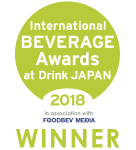Butyrate
Butyrate, also known as butyric acid, is a short-chain fatty acid (SCFA) that is crucial for colon health and overall well-being. It is primarily produced through the fermentation of dietary fibers by anaerobic bacteria in the human gut, such as Faecalibacterium prausnitzii, Eubacterium, and members of the genus Roseburia. Butyrate serves as a major energy source for colonocytes, promotes a healthy intestinal lining, and possesses anti-inflammatory properties. It also plays a role in regulating gene expression, cell differentiation, and apoptosis, which are important for preventing colorectal cancer.1Louis, P., & Flint, H. J. (2009). Diversity, metabolism and microbial ecology of butyrate-producing bacteria from the human large intestine. FEMS Microbiology Letters, 294(1), 1-8. https://doi.org/10.1111/j.1574-6968.2009.01514.x
Role of butyrate in human health
- Colon Health and Cancer Prevention: Butyrate is the primary energy source for colonocytes and promotes a healthy colon by maintaining mucosal integrity and reducing inflammation. It has been shown to inhibit the growth of colon cancer cells.2Hamer, H. M., Jonkers, D., Venema, K., Vanhoutvin, S., Troost, F. J., & Brummer, R. J. (2008). The role of butyrate on colonic function. Alimentary Pharmacology & Therapeutics, 27(2), 104-119. https://doi.org/10.1111/j.1365-2036.2007.03562.x.
- Anti-inflammatory Properties: Butyrate exerts anti-inflammatory effects by inhibiting nuclear factor kappa B (NF-κB) and modulating cytokine production in the gut, which helps in managing inflammatory bowel disease (IBD) and other inflammatory conditions.3Segain, J. P., de la Blétière, D. R., Bourreille, A., Leray, V., Gervois, N., Rosales, C., Ferrier, L., Bonnet, C., Blottière, H. M., & Galmiche, J. P. (2000). Butyrate inhibits inflammatory responses through NFkB inhibition: Implications for Crohn’s disease. Gut, 47(3), 397-403. https://doi.org/10.1136/gut.47.3.397.
- Gut Barrier Function: Butyrate strengthens the intestinal barrier by enhancing the production of tight junction proteins. This function is crucial in preventing the translocation of harmful substances from the gut into the bloodstream.4Peng, L., Li, Z. R., Green, R. S., Holzman, I. R., & Lin, J. (2009). Butyrate enhances the intestinal barrier by facilitating tight junction assembly via activation of AMP-activated protein kinase in Caco-2 cell monolayers. Journal of Nutrition, 139(9), 1619-1625. https://doi.org/10.3945/jn.109.104638.
- Energy Metabolism: Butyrate influences energy metabolism by acting as a signaling molecule, affecting cellular processes, energy expenditure, and insulin sensitivity.5Donohoe, D. R., Garge, N., Zhang, X., Sun, W., O’Connell, T. M., Bunger, M. K., & Bultman, S. J. (2011). The microbiome and butyrate regulate energy metabolism and autophagy in the mammalian colon. Cell Metabolism, 13(5), 517-526. https://doi.org/10.1016/j.cmet.2011.02.018.
- Neurological Effects: Emerging evidence suggests that butyrate can influence brain health through the gut-brain axis, impacting behavior and potentially alleviating symptoms of neurological disorders.6Stilling, R. M., van de Wouw, M., Clarke, G., Stanton, C., Dinan, T. G., & Cryan, J. F. (2016). The neuropharmacology of butyrate: The bread and butter of the microbiota-gut-brain axis? Neurochemistry International, 99, 110-132. https://doi.org/10.1016/j.neuint.2016.06.011.
Fun fact about butyrate
There is a small amount of naturally occurring butyric acid in butter, and the name “butyric” is derived from it because butyric acid contributes to the distinct taste and aroma of butter. In high concentrations, butyrate can have a pungent and unpleasant odour, reminiscent of rancid butter. However, in smaller amounts, it adds a pleasant, creamy, and buttery flavour to foods. The Chuckling Goat kefir is really rich in butyric acid. This contributes to its powerful taste!
Where to find your butyrate score in the Chuckling Goat Gut Microbiome Test
The Chuckling Goat Gut Microbiome Test features your butyrate score in the postbiotics report.
Important disclaimer
The Chuckling Goat Gut Microbiome Handbook is an educational resource built to translate complex science into plain English. The information provided on this page is not intended to be a substitute for professional medical advice, diagnosis, or treatment. Always seek the advice of your GP or other qualified health provider with any questions you may have regarding a medical condition. Always check with your GP for interactions with medications/health conditions before changing your diet or starting to take food supplements.
References
- 1Louis, P., & Flint, H. J. (2009). Diversity, metabolism and microbial ecology of butyrate-producing bacteria from the human large intestine. FEMS Microbiology Letters, 294(1), 1-8. https://doi.org/10.1111/j.1574-6968.2009.01514.x
- 2Hamer, H. M., Jonkers, D., Venema, K., Vanhoutvin, S., Troost, F. J., & Brummer, R. J. (2008). The role of butyrate on colonic function. Alimentary Pharmacology & Therapeutics, 27(2), 104-119. https://doi.org/10.1111/j.1365-2036.2007.03562.x.
- 3Segain, J. P., de la Blétière, D. R., Bourreille, A., Leray, V., Gervois, N., Rosales, C., Ferrier, L., Bonnet, C., Blottière, H. M., & Galmiche, J. P. (2000). Butyrate inhibits inflammatory responses through NFkB inhibition: Implications for Crohn’s disease. Gut, 47(3), 397-403. https://doi.org/10.1136/gut.47.3.397.
- 4Peng, L., Li, Z. R., Green, R. S., Holzman, I. R., & Lin, J. (2009). Butyrate enhances the intestinal barrier by facilitating tight junction assembly via activation of AMP-activated protein kinase in Caco-2 cell monolayers. Journal of Nutrition, 139(9), 1619-1625. https://doi.org/10.3945/jn.109.104638.
- 5Donohoe, D. R., Garge, N., Zhang, X., Sun, W., O’Connell, T. M., Bunger, M. K., & Bultman, S. J. (2011). The microbiome and butyrate regulate energy metabolism and autophagy in the mammalian colon. Cell Metabolism, 13(5), 517-526. https://doi.org/10.1016/j.cmet.2011.02.018.
- 6Stilling, R. M., van de Wouw, M., Clarke, G., Stanton, C., Dinan, T. G., & Cryan, J. F. (2016). The neuropharmacology of butyrate: The bread and butter of the microbiota-gut-brain axis? Neurochemistry International, 99, 110-132. https://doi.org/10.1016/j.neuint.2016.06.011.
















